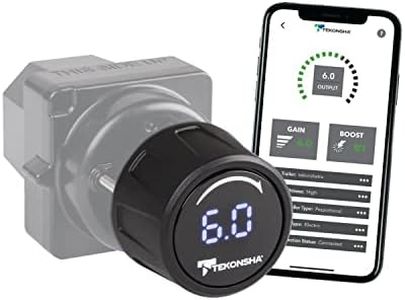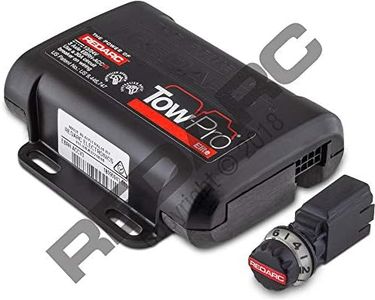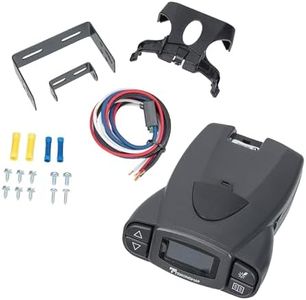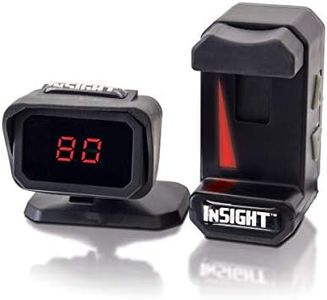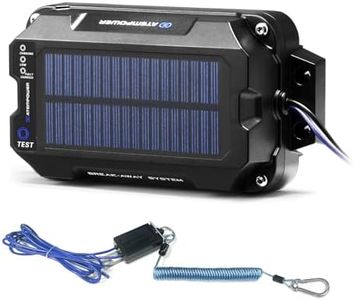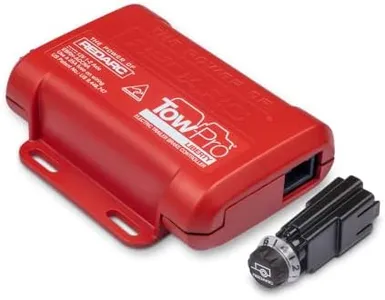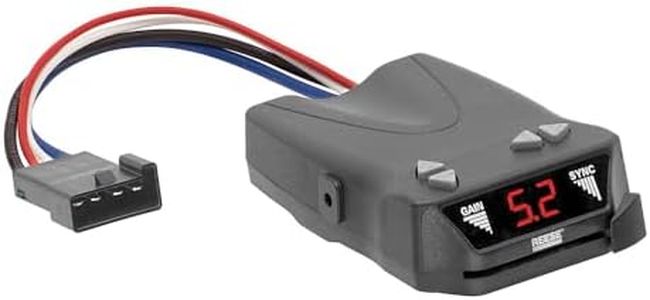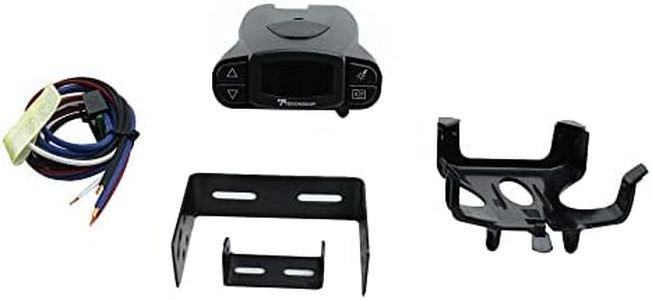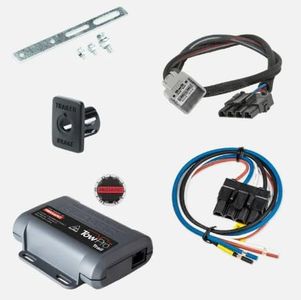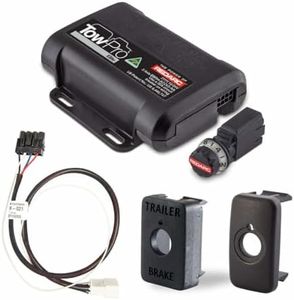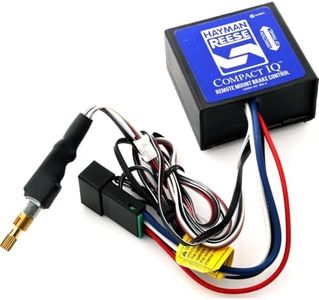We Use CookiesWe use cookies to enhance the security, performance,
functionality and for analytical and promotional activities. By continuing to browse this site you
are agreeing to our privacy policy
10 Best Rv Brake Controllers
From leading brands and best sellers available on the web.By clicking on a link to a third party's website, log data is shared with that third party.
Buying Guide for the Best Rv Brake Controllers
Choosing the right RV brake controller is very important for your safety and the safe towing of your RV. Brake controllers manage how your trailer’s brakes respond when you use the tow vehicle’s brakes, and making a smart choice can lead to smoother stops, reduced wear on your brake system, and greater overall control. With several technologies and features available, your choice should be guided by your towing habits, trailer weight, and need for convenience or simplicity. Let’s go through the essential things you need to consider before buying.Type of Brake ControllerThe type of brake controller is about how the device detects when and how much braking force to apply to your trailer. The two common types are time-delayed and proportional. Time-delayed controllers send a preset amount of power to the trailer brakes after a delay, while proportional controllers sense the braking force of your tow vehicle and match it. Proportional controllers provide smoother, more predictable braking and are usually best for frequent or heavier towing. If you tow only occasionally or with smaller trailers, a simple time-delayed controller might be enough. Think about how often you tow and the size of your trailer when choosing between the two.
Number of Axles SupportedThis spec tells you how many axles the brake controller can manage. Trailers may have one, two, or more axles, and your brake controller must be compatible with your trailer’s setup. Most basic controllers handle up to two axles, while more advanced models can manage up to four. Check your trailer before buying and make sure the controller covers at least as many axles as your trailer has. If you plan to upgrade to a bigger trailer in the future, consider a controller with more axle support.
Installation MethodInstallation method refers to how the brake controller is mounted and connected in your tow vehicle. Some controllers are hardwired into your vehicle’s electrical system, while others offer plug-and-play setups using factory or aftermarket harnesses. Quick-connect options are easier to install and can be moved between vehicles, which is helpful if you tow with multiple vehicles. If you prefer a permanent, tidier setup, hardwired controllers are the way to go, but they may require more time or professional installation. Your choice depends on your comfort with vehicle installations and whether you’ll need to move the controller between different vehicles.
Display and ControlsThe display and controls affect how easy it is for you to monitor and adjust your trailer brakes on the go. Some controllers use simple LED lights, while others have full digital displays that show braking power, connection status, and error messages. Controllers with easy-to-use buttons or dials make adjustments quicker and less distracting on the road. If you value clear feedback and easy adjustments, choose a model with a more informative display and intuitive controls. Think about how comfortable you are reading displays while driving and how much quick adjustment flexibility you need.
Adjustability and Sensitivity SettingsAdjustability refers to how precisely you can set the braking power and timing according to your trailer’s weight and braking needs. Good controllers let you fine-tune braking force and how fast it ramps up—important for getting the smoothest stops depending on road and load conditions. If you tow trailers of different sizes, or if you frequently drive in varying terrain (like mountains or off-road), look for controllers with wide adjustment ranges and easy-access settings. The right adjustability helps prevent trailer sway and reduces wear on both your vehicle and trailer brakes.
Manual Override FeatureThe manual override feature lets you apply the trailer brakes independently of your tow vehicle’s brakes, which is crucial if you need to control trailer sway or test your brake setup. All good brake controllers offer a manual lever or button for this purpose. Make sure the override is easy to reach and use while driving. Reliable manual override is especially important for steep descents or emergency situations, so always check how comfortable you are using this feature before purchasing.
